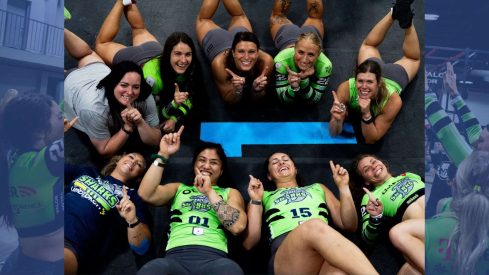Latest CrossFit News
-

Full 2025 CrossFit Games Roster – See the 60 Athletes Who Qualified
The 2025 CrossFit Games qualifying season is now complete, and we have a full roster of 30 men and 30 women. These athletes listed below earned their tickets through one of the 10 In-Person Qualifying Events, or In-Affiliate Semifinals, held from early April to mid-June. Note: It is still possible that some athletes may withdraw…
Competitions
-
5 Burning Questions Heading Into the 2025 CrossFit Games
We’re only two weeks away from the 2025 CrossFit Games, and with this comes a wave of speculation, excitement, and plenty of unanswered questions. Whether you’re a dedicated fan or a curious newcomer to the sport, here are five of the most pressing questions we’re asking as we approach the sport’s biggest event of the…
-
2025 CrossFit Games Event 2 Revealed – Heavy Dumbbells, High Skill, Shoulder Burn
-
Carolyne Prevost Steps in for Injured Alex Gazan — Will Compete at CrossFit Games and Age Group Games in August
-
Are Wearables Making Us Fitter? It Depends
-
Stop Playing Macro Tetris: What These 6 Nutrition Coaches Do Differently
-
Danielle Brandon Shifts Coaching Team Ahead of 2025 CrossFit Games
-
Annie and Katrin’s Mission – Empowering Women Through Every Season
CrossFit Basics
What Is CrossFit®?
CrossFit® is often referred to and known as “the sport of fitness”, but originally got its roots as a fitness regimen developed around functional exercises and high-intensity workouts. CrossFit® is a registered trademark of CrossFit, Inc.; more information can be found at their website, CrossFit.com.
This fitness methodology numerous movement staples, including:
- Box Jumps
- Thrusters
- Weighted Carries
- Squats
- Snatches
- Clean & Jerks
- Handstands
- Pull-Ups
These are a few of the movements an athlete can perform in any given CrossFit® workout. In order to excel in this sport, an athlete must be well-rounded and carefully curate programs that improve strength, mobility, power, and much more.
More In CrossFit
-
Stop Playing Macro Tetris: What These 6 Nutrition Coaches Do Differently
If I’ve learned one thing after coaching CrossFit for 15 years, it’s that getting people to show up at the gym is the easy part. One thing that seems to make the challenge less daunting, however, is when they find the right nutrition coach. But how do you go about finding the right coach and…
-
Danielle Brandon Shifts Coaching Team Ahead of 2025 CrossFit Games
-
Annie and Katrin’s Mission – Empowering Women Through Every Season
-
Our Complete Guide to Watching the CrossFit Games Documentaries
-
Southwest Florida Sharks Eye Perfect Season as United Grid League Playoffs Loom
-
Gymreapers Named Official Partner of the 2025 CrossFit Games Age Group Division
-
World Fitness Project Tour Stop II Takes Shape: Unofficial Challenger Qualifier Results
















